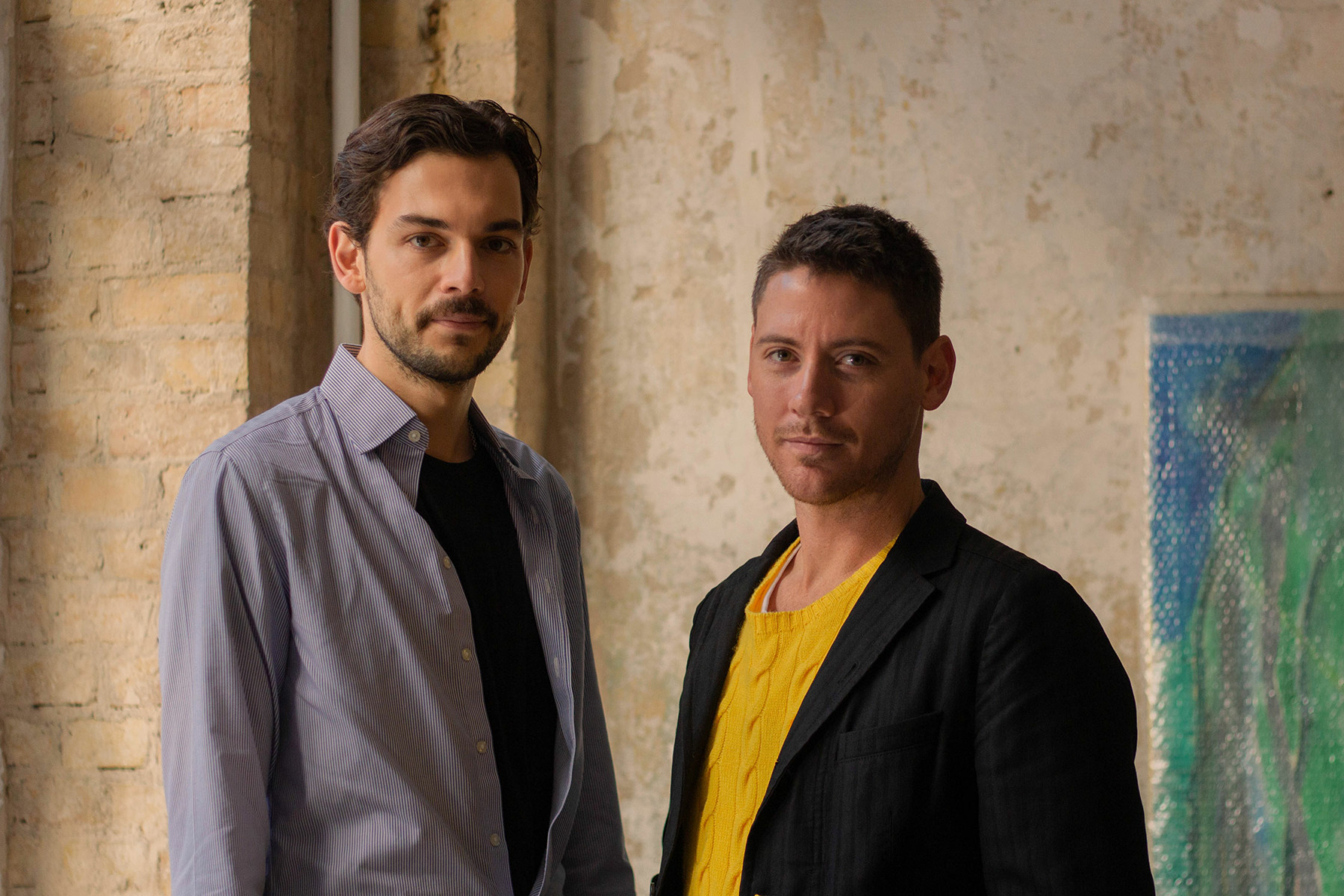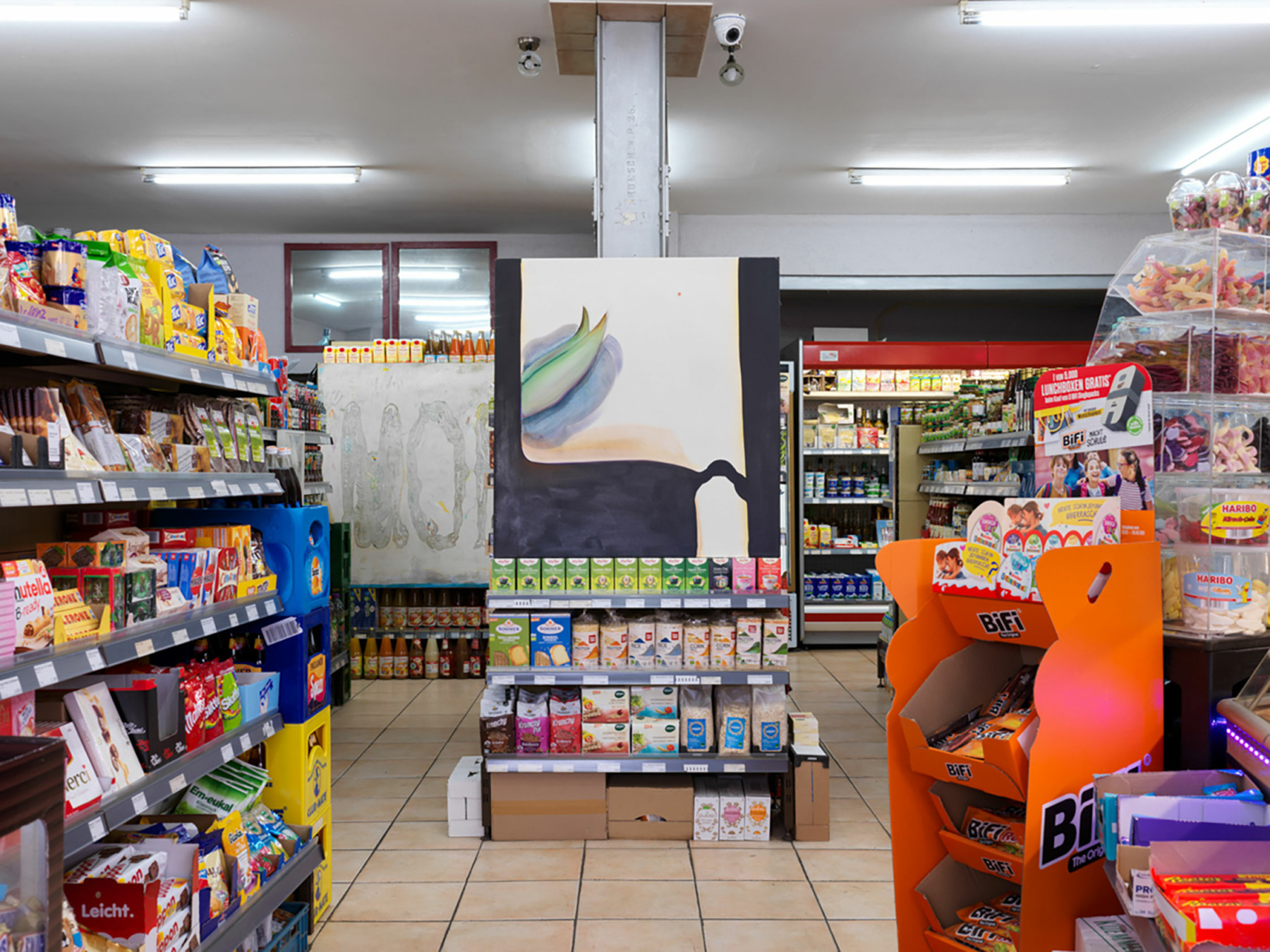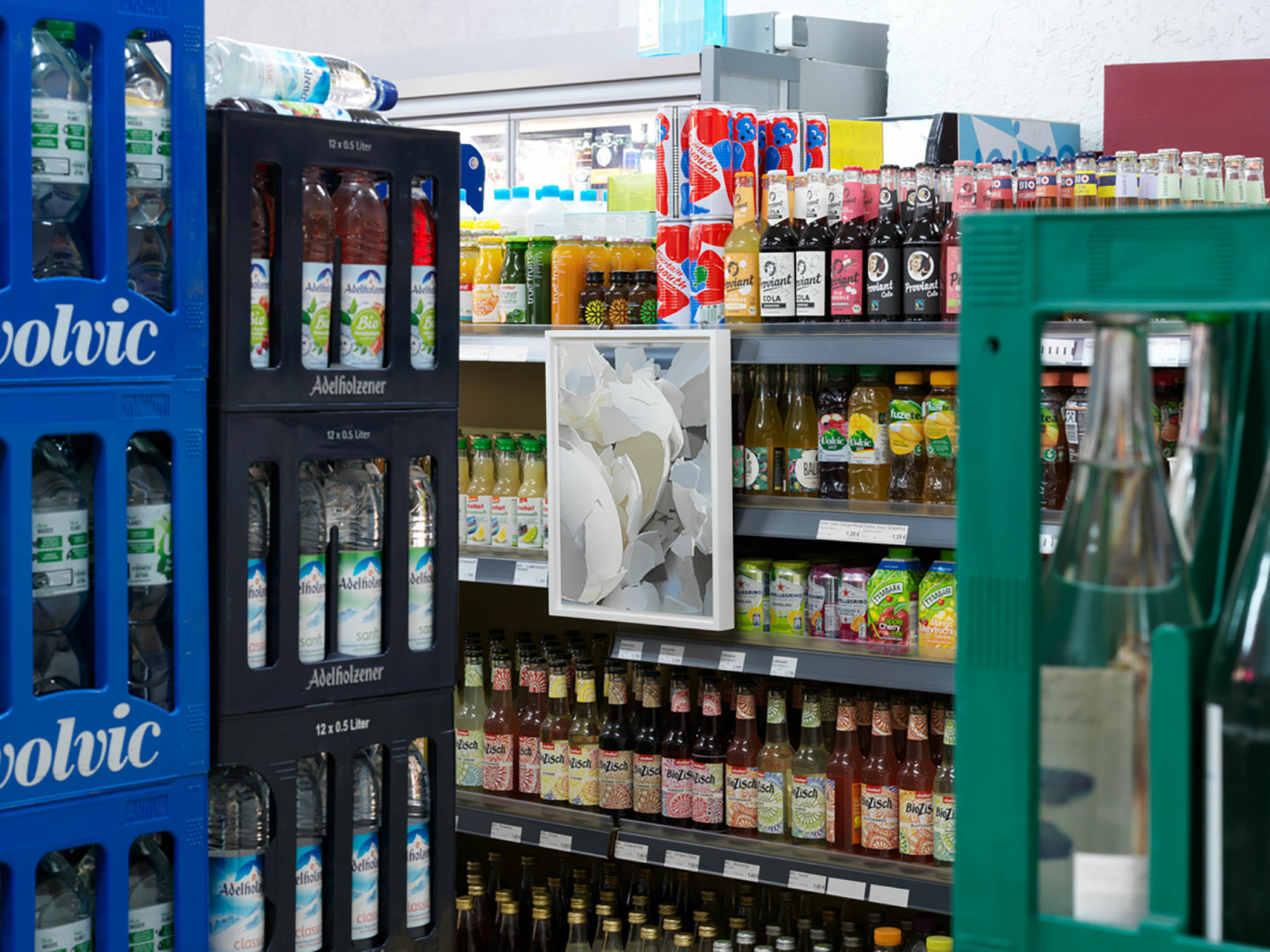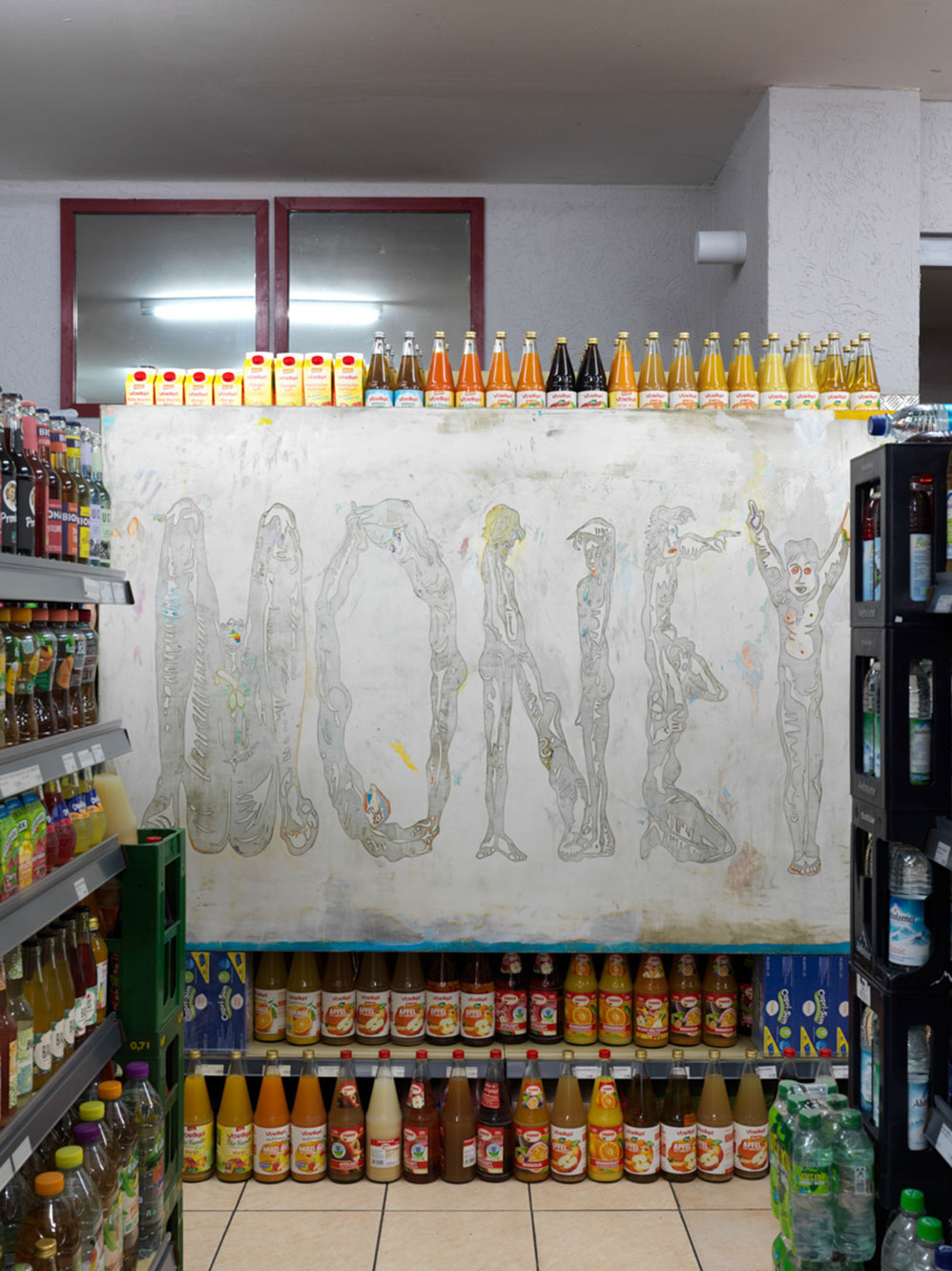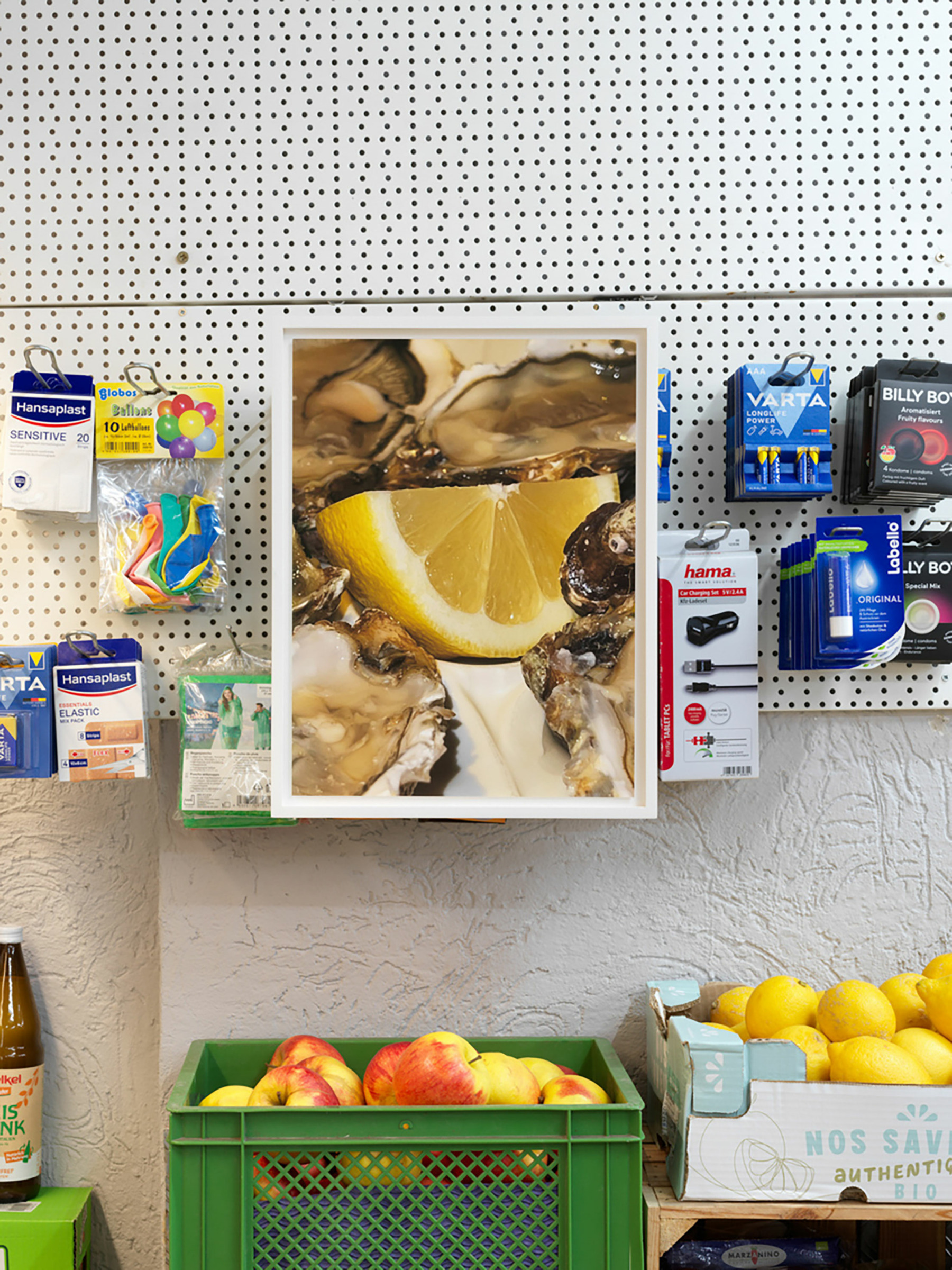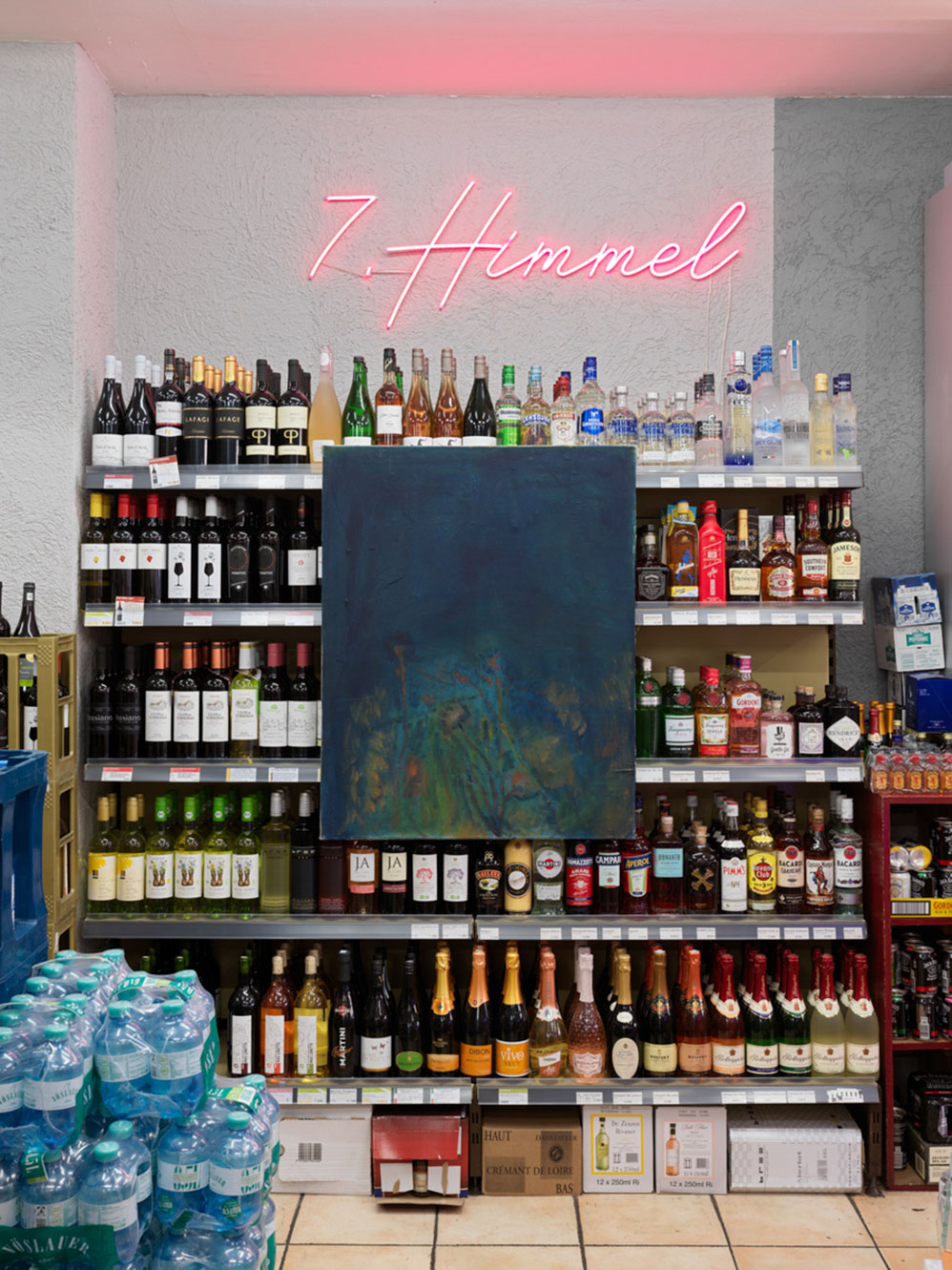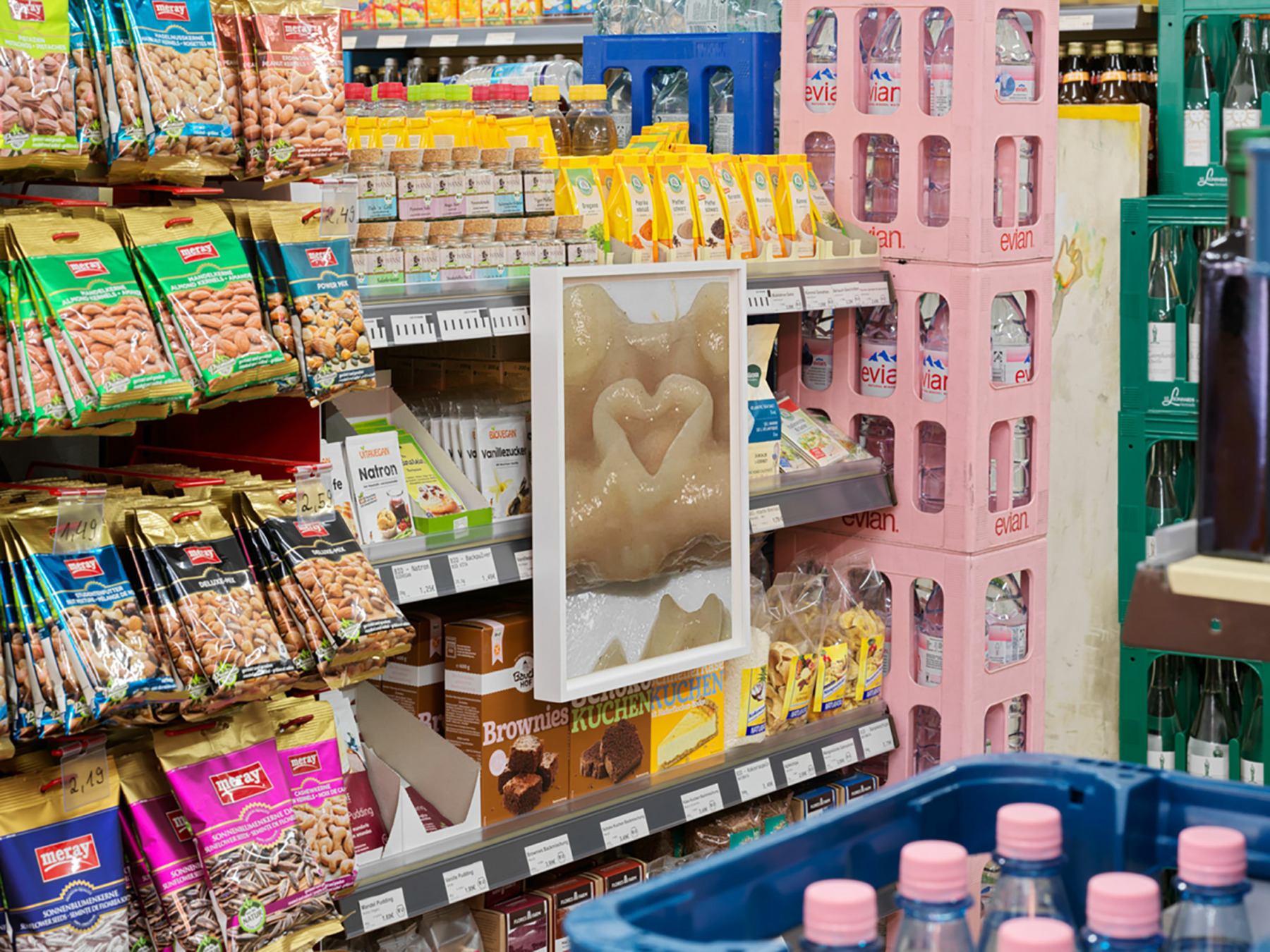Super Super Markt’s founders outline the art world’s future and present their upcoming exhibition Homestory, in collaboration with Friends of Friends.
From recommending an exciting show in town to advising in first art purchases, both Julius Jacobi and Rory Kirk-Duncan have always been the “designated art person” in their circle of friends. Grandson of an art historian and having co-run an exhibition space in Cologne, Julius began laying the foundations of Super Super Markt—a Berlin-based membership community aiming to redefine the experience of purchasing art—in the Summer of 2021. Shortly after, he was introduced to Rory by a mutual friend. “Rory worked in commercial art galleries for ten years and joined full-time at the beginning of 2022. We’re building Super Super Markt with a shared mission and commitment to make art more accessible for the new generation.”
Over the last year, Super Super Markt has made its name by distancing itself from what is often seen as a secluded art world. Through exhibitions in unconventional places, an online platform, and an impressive mix of well-established and up-and-coming artists, they have built a community of young artists and collectors while bridging the gap between the online and physical art market. For them, the path toward a new art ecosystem is built on breaking down barriers and opening up space for more transparent conversations.
We spoke with Julius and Rory about the importance of community, the future of the art world, and their upcoming collaboration with Friends of Friends, Homestory— a group show where five contemporary artists will explore the Friends Space from the perspective of a collector’s home.
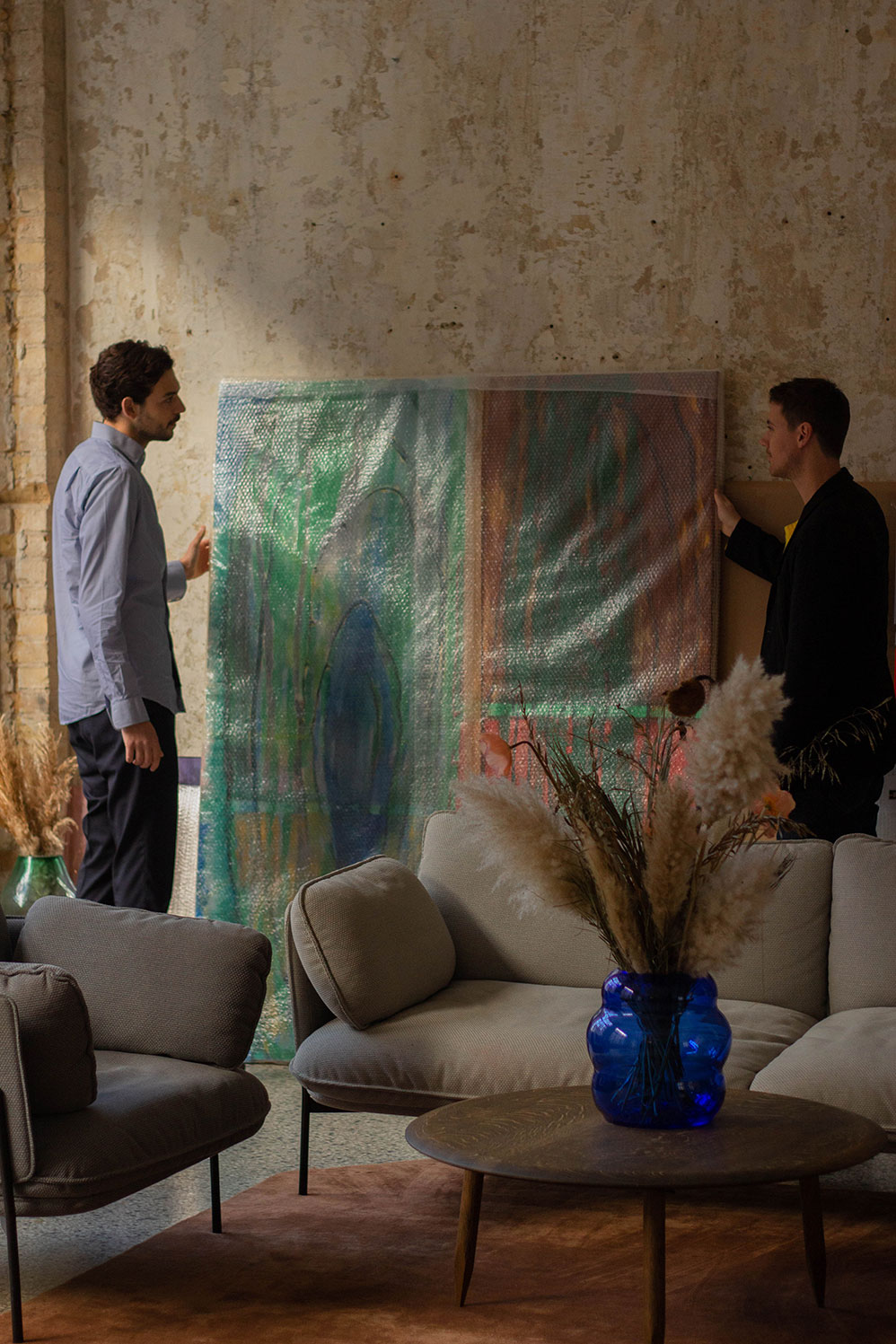
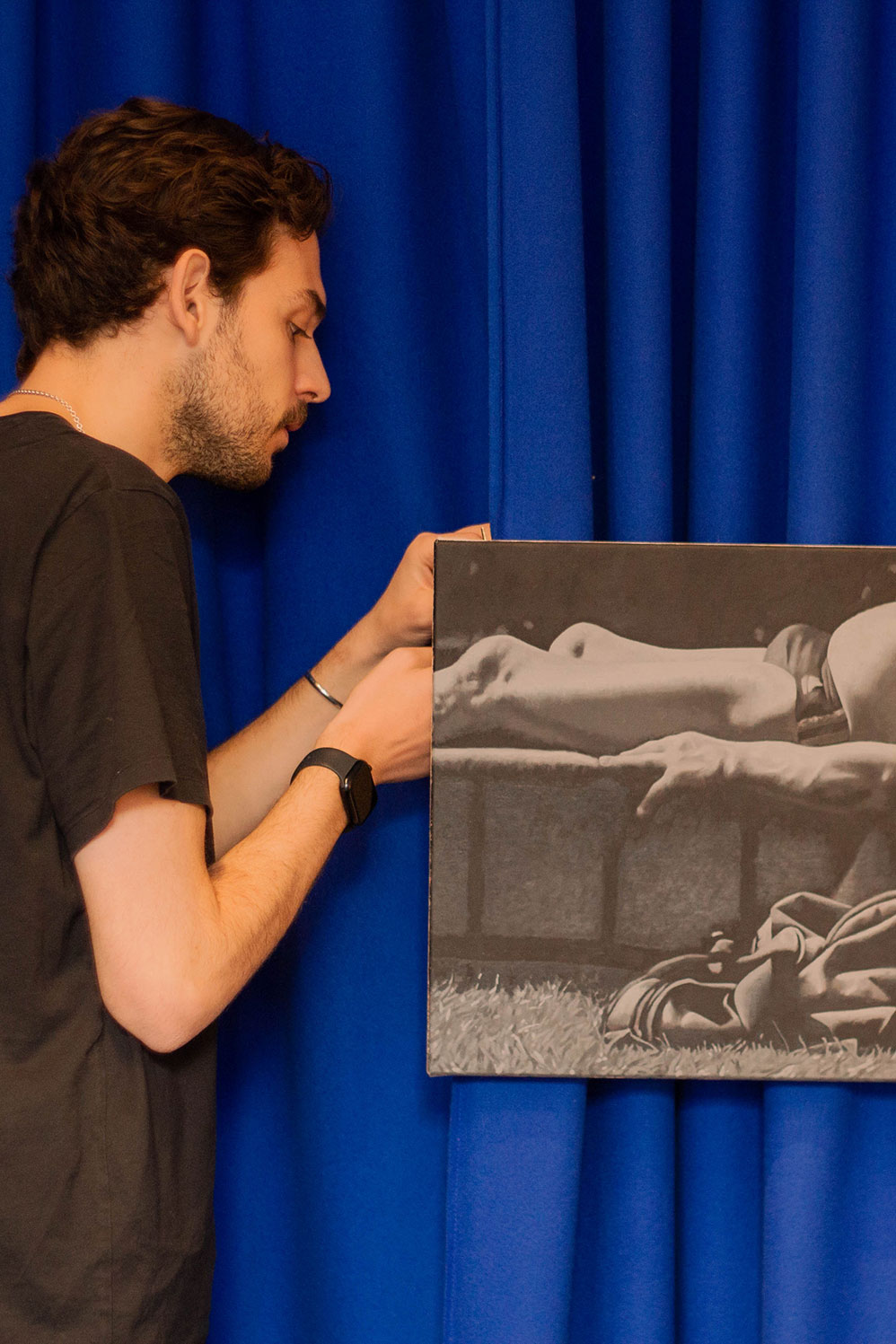
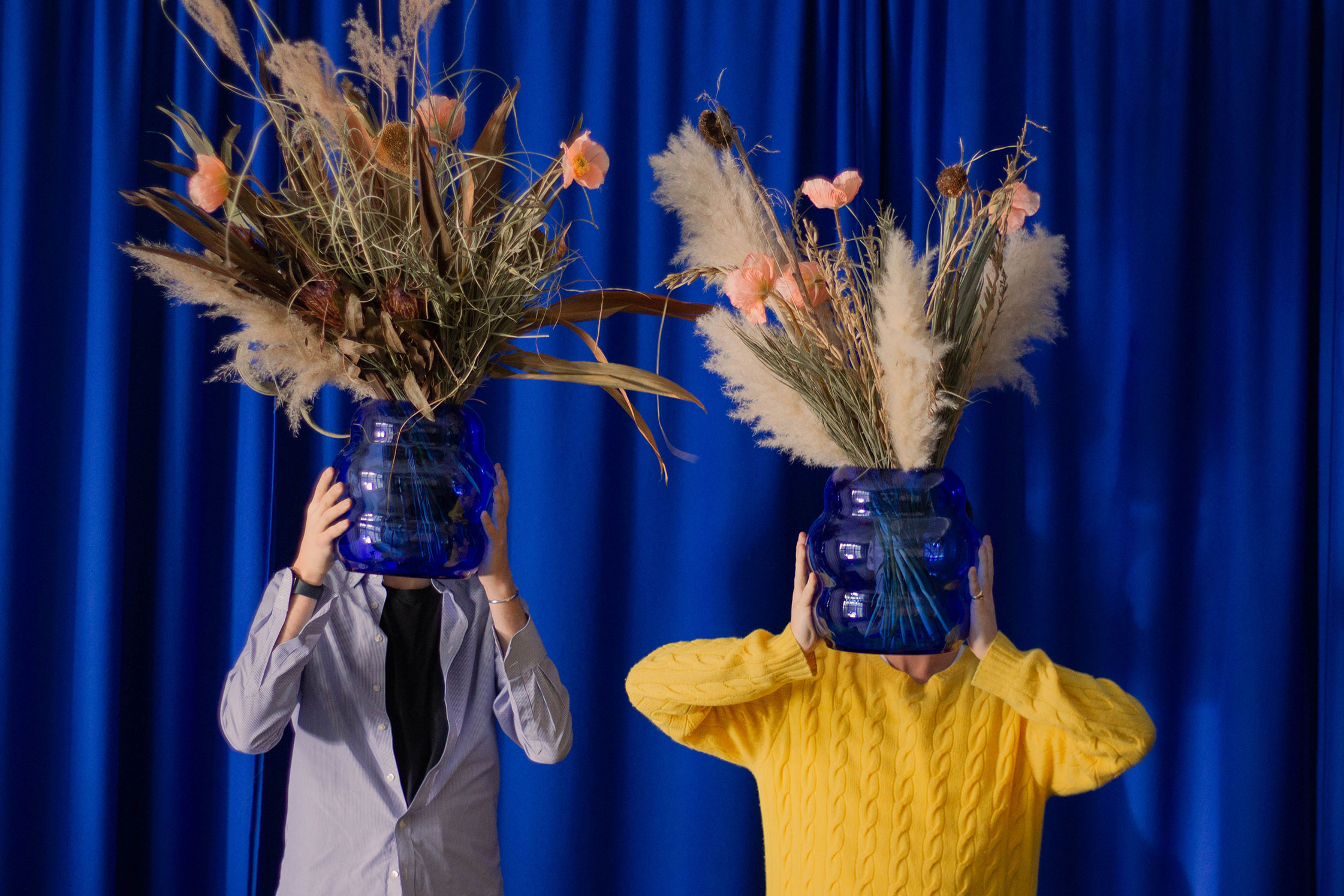
-
You have both worked in different spheres of the arts before; what drew you to create Super Super Markt?
Julius — Coming out of a global lockdown, it was very challenging for our generation to have access to the art world. Physical spaces, like a gallery, aren’t always the warmest and most welcoming environments; online, there is an oversupply. In addition, the art world is not very transparent when it comes to pricing, and everything behind it is not really accessible.
It felt that when wanting to buy art, our generation looked primarily online, but it is not the same as buying a pair of socks. There is so much emotion and context behind purchasing a piece of art. Still, when you look at the online landscape it can be very transactional and fast-paced. I wanted to develop a more personal platform that gives people better access to art by letting them know about exciting events and artists near them and simplifying the art buying process.
Rory — Having worked in galleries for close to ten years, having that moment when someone walks into a space and has to ask for a price list can be a very intimidating experience. There are ways of purchasing or collecting art that don’t have such high barriers. It can be very daunting for someone to think about buying their first artwork and they might need help knowing where to look or how to go about it. There’s no rulebook. If the setup is the end, the barrier is closed for a younger generation to have that touch point with going into a space, making that call, and deciding on buying. Our generation often learns about artists and shows through a screen. So it is essential to level the digital touch point and counterbalance that with physical exhibitions.
-
Is Super Super Markt intended to be a community of collectors, or is it also for people just beginning to get interested in art?
Julius — It’s both. We’re not limiting ourselves to just one target audience. We always say we want to make art more accessible for our generation, which for some people means getting their first entry point. Some are just starting out, and they’re becoming members to get our yearly edition and start building their collection; others might already have a certain budget but might need more time or capacity to invest and indulge in this topic. So we’re offering them an easy, curated experience to purchase or if they want to spend more money to build a valuable collection. We want to make it as easy as possible.
Rory — I think what’s fascinating during these different member events is this dialogue between someone who’s in their 30s—who’s starting or just bought their first artwork— with someone who’s in their 60s and has spent 30 years of their life building a collection. So It’s also about the community culture that we’re interested in. From my perspective from working in galleries, people come together in the art world during fairs or exhibition openings. But there is so much more. We’re fortunate to have access and understand that there is the possibility of getting people to visit private collections or go to studio visits. So it is interesting for a community to be brought together in these different instances that otherwise wouldn’t be accessible to a regular exhibition visitor who doesn’t know those things are possible.
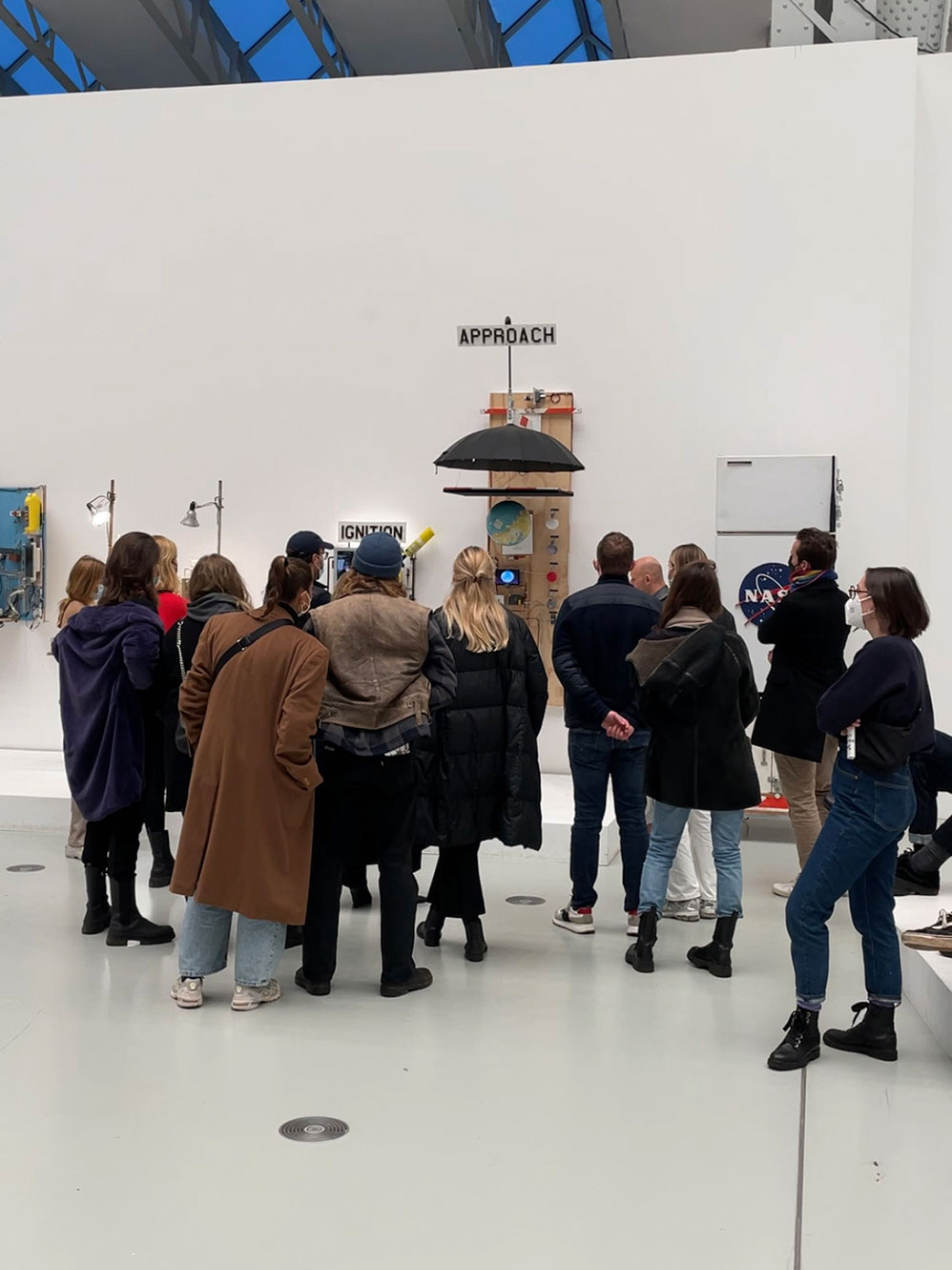
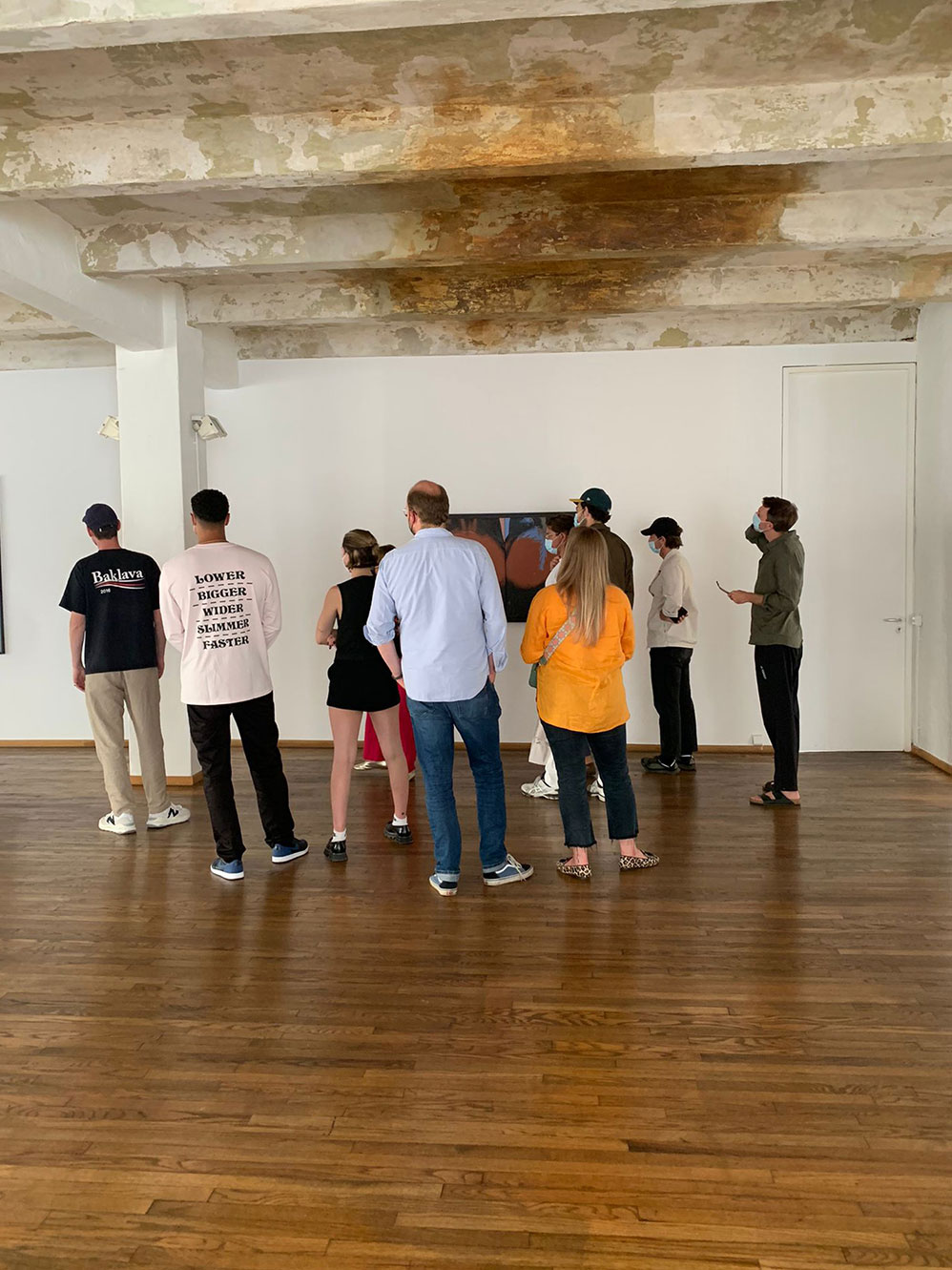
-
The contrast between established collectors and young people just getting started must be fascinating.
Rory — The difference between older and younger collectors is something that we’re interested in. The members that are already part of Super Super Markt are so varied. They come from different backgrounds, such as creative industries, tech startups, finance, or simply art lovers who love going to museums on weekends.
It’s exciting to try and break down the definition of a collector. Someone who collects very expensive paintings from Art Basel, that’s one thing. But you can also be a collector who supports the younger artists coming out of art school. So, for younger people it is interesting to feel like they’re part of something more than just a gallery opening, or visiting an art fair, where you’re walking around booths and seeing thousands of artworks. Our events have shown us a huge desire for these get-togethers from both sides.
Julius — Our parent’s generation always connected consuming art to the physical space. So if you’re only relying on these gatekeepers, be it galleries, museums, or art fairs, of course, it’s more difficult to have access. We see that both people and art in our generation are much more culturally and socially embedded in things we expose ourselves to daily, whether through fashion collaborations or donations. These things are so much more transparent and accessible. I would say the willingness of people to want a foot in the door is much higher than the generation preceding us. We have the opportunity to rethink this entire ecosystem from scratch. And that’s what’s so exciting about it, both for the collectors and the artists we collaborate with.
-
How is the process of deciding with which artists you want to collaborate?
Rory — It differs every time. When choosing artists for physical exhibitions, it’s always centered around the concept. Regarding our digital platform, it can be young artists who are making waves in the industry, and we also show artists who have recently graduated from universities and art academies.
In both cases, for us, it is important to blend established positions with emerging artists who are young and recently graduated, so it doesn’t become too one-sided. So we’re constantly looking at the newest emerging artists we find doing exciting things and seeing how to position them alongside well-known, up-and-coming contemporary artists. We go to many exhibitions and visit many studios. We are constantly engaging with artists from a personal and recommendation level. It’s a 24-hour day thing.
Julius — The overarching factor is the quality, and how we define it is by being in conversation with the artists that we’re showing. Ultimately, it’s up to us to decide, but we don’t want to get to a point where it’s only us finger-pointing and saying, ‘this is what we believe is the most interesting.’ The best thing that can happen to us is if an artist we work with recommends another person they like, value, or believe in. We are not a gallery where we have a fixed roster of artists that we only work with. We collaborate, and that makes it exciting for the artists as well.
-
You are having an exhibition called Homestory in the Friends Space in Berlin. Can you tell us about the concept behind it?
Rory — The exhibition Homestory displays the works of five different contemporary artists: Gina Fischli, Jeewi Lee, Max Ruf, Oliver Osborne, and Talisa Lallai.
The concept sparked from a discussion we had about the origins of Friends of Friends, which for us, is the home story. That’s how I learned about Friends of Friends. It is very interesting; on the one hand, Friends of Friends is about community, and at the same time, the Home Story is about getting to know someone and the objects they collect in their life. I think the way that we engage with art can’t be underestimated. So for us, that was a very strong thread with what we do, our members, and the community we bring together. So we decided we wanted the exhibition to feel as if you were walking into a collector’s home. Homestory is an opportunity to create a dialogue between the artists’ work and this collector that we had in our minds.
Julius — If you look at the shows we’ve had, none of them are like the typical white cube. Being at somebody’s house and exploring these unique works in that context immediately makes it accessible and welcoming. A collection is a portfolio of different mediums and artists, but ultimately, it reflects the collector’s personality. The line between what’s an artwork and not isn’t clear. And it’s always interesting when an exhibition or an artwork gets to the point where it becomes intriguing. That’s a lot of what we are about, creating conversation. This is why we’re so excited about showing in a setting like the Friends Space.
-
Finally, how do you see the future of the art world?
Julius — We live in a time where things are becoming much more transparent and much more connected on a global level. Speaking to young artists—the artists defining the next generation or the next century—many of them share this opinion that things will become much more collaborative. It will not be in the typical way ‘I have my gallery, and everything can only be done through it.’ Because nowadays, artists have their platforms, where collectors might reach out to them directly and create a personal relationship, whereas 20 years ago, this was a different story. I genuinely think this approach of being more collaborative and allowing artists to make their own decisions can create much more exciting results rather than having somebody basically trying to steal your career.
We’re most excited about and committed to creating the future art ecosystem—where we share a collaborative approach and where it doesn’t matter if you are a represented artist or not. But the focus is on the way people interact, the way people learn about and consume art. That’s why we are building the infrastructure to do that and are excited about the future.
Rory — So we can say the future of art is collaboration. That is it. The future is collaboration.
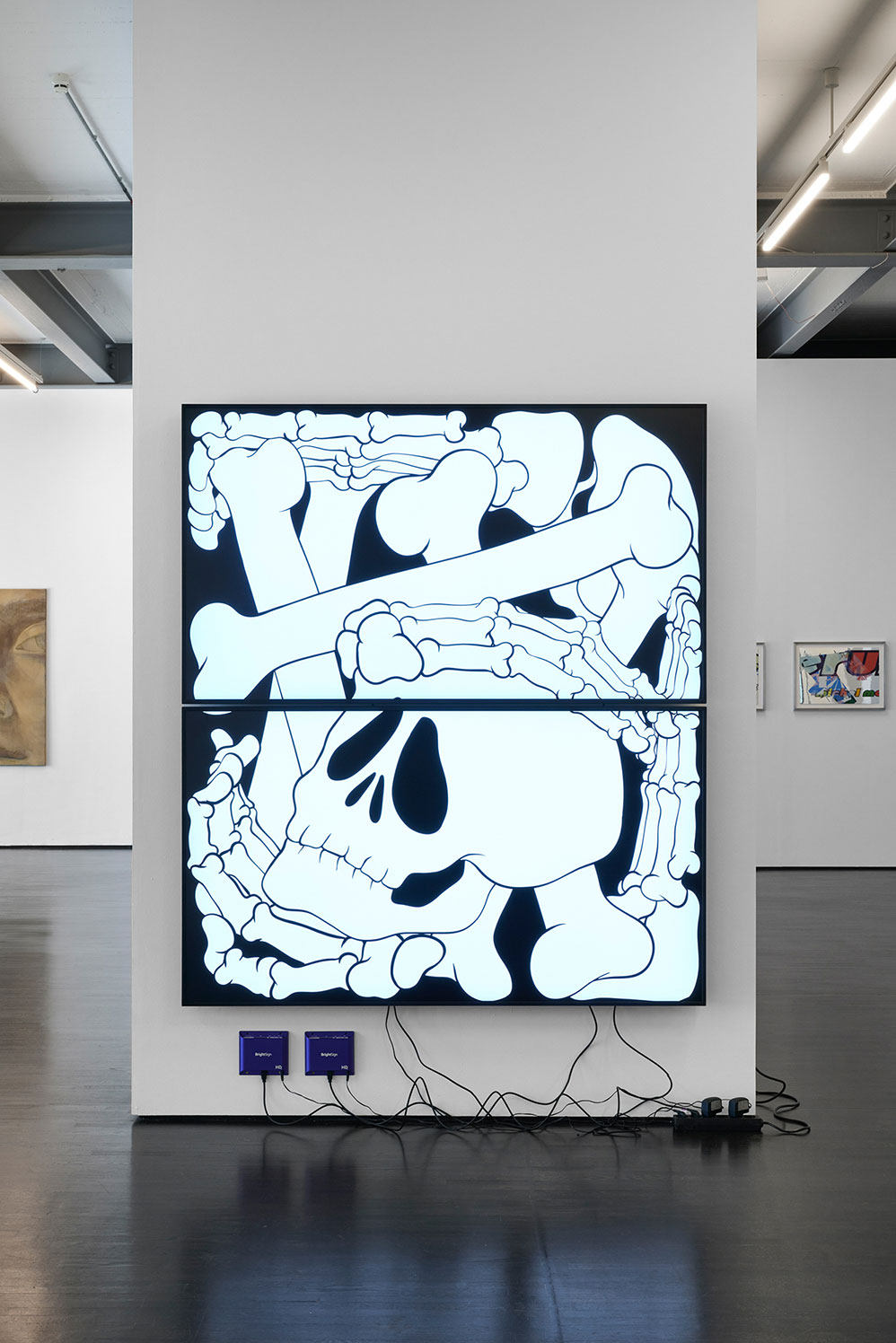
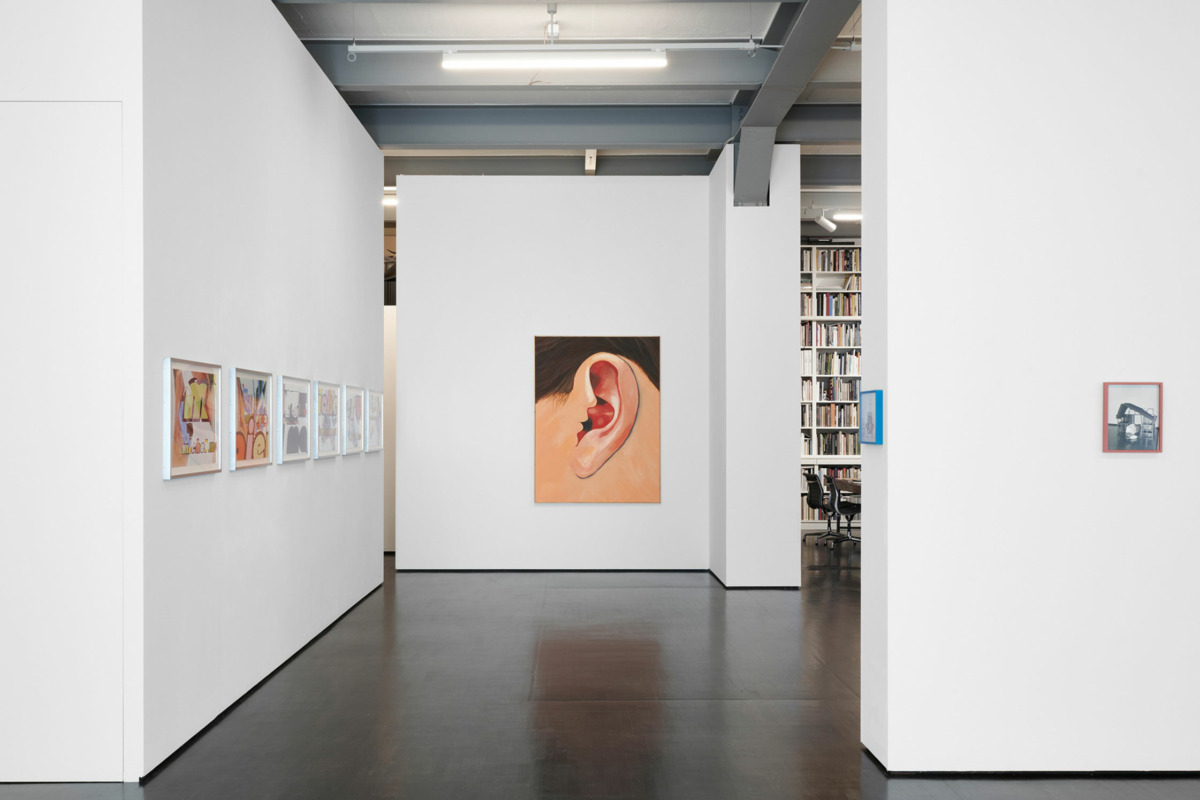
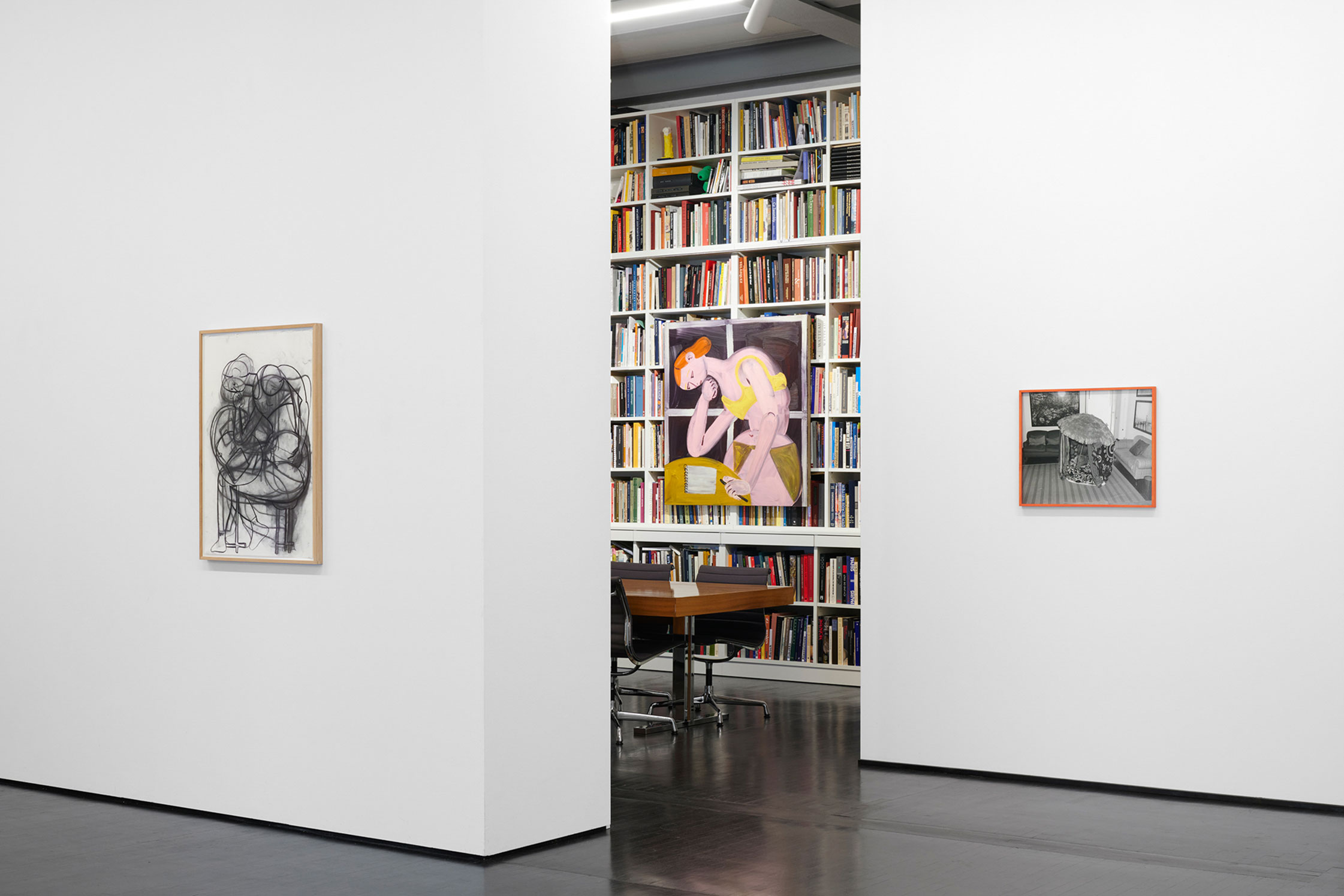
Homestory
In the exhibition Homestory, these five artists will explore the Friends Space from a collector’s home perspective. One where the works on display are placed in a private setting–referencing a domestic subject matter: Plants, windows, interior objects, and food, items from our lives that infiltrate our daily cosmos.
Gina Fischli
Rooted in her early studies of stage design, Gina Fischli’s practice blends sculpture and space with alternative production processes, often using craft-related techniques and unusual materials. She transforms her banal subjects—including wine glasses, household furniture, and birthday cakes—into objects of desire with her own characteristic tongue-in-cheek humor.
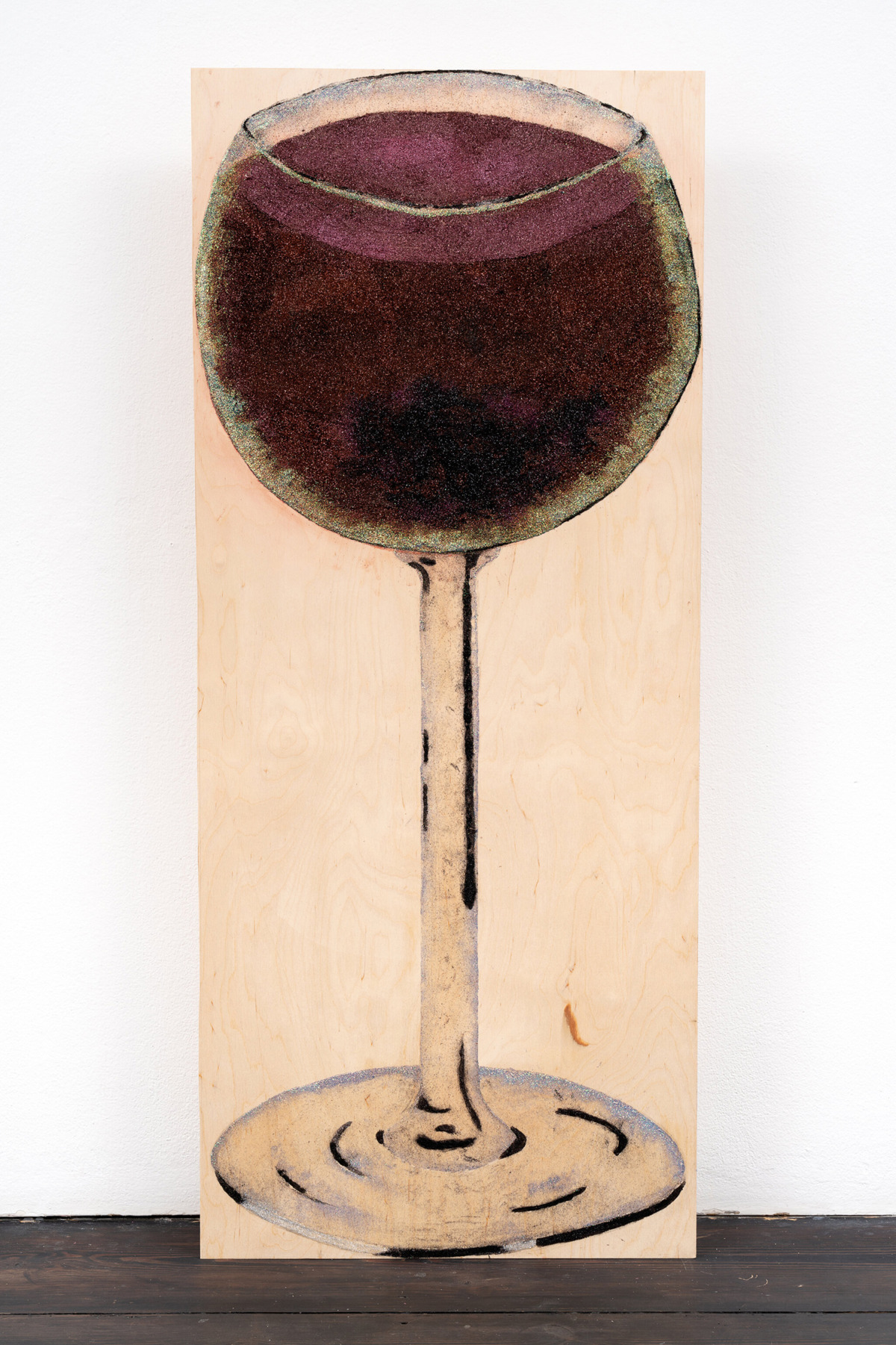
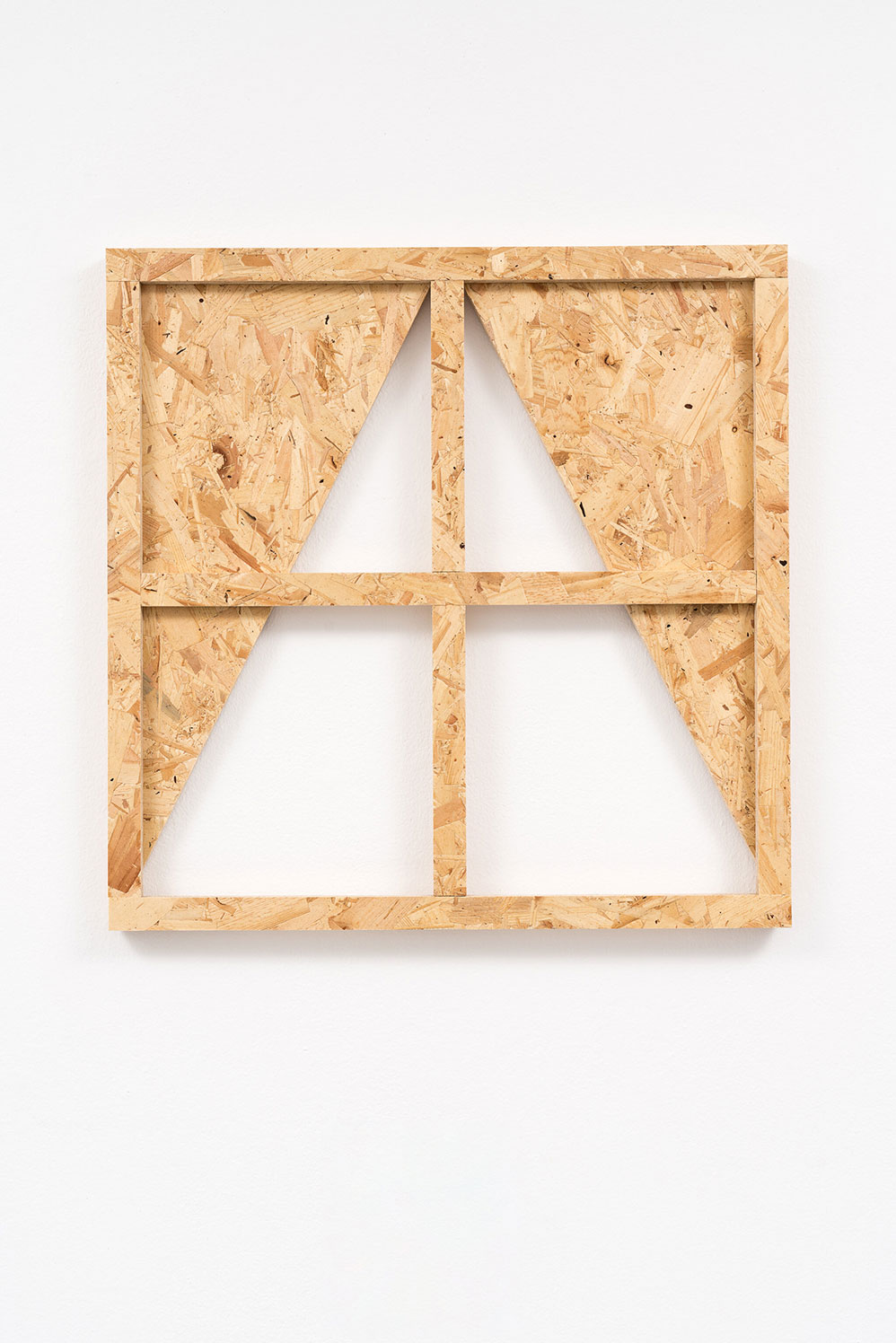
Jeewi Lee
Lee’s work deals with traces by thematizing the past, presence, and absence. The trace bears witness to time while reflecting on its history and production. In her installations, videos, and painting series, the trace exists as a residue of past lives—a visual allegory for lived experience, place, and memory. In addition, Lee carries out extensive research on materials and their properties, leading to an exploration of the poetic context of each material.
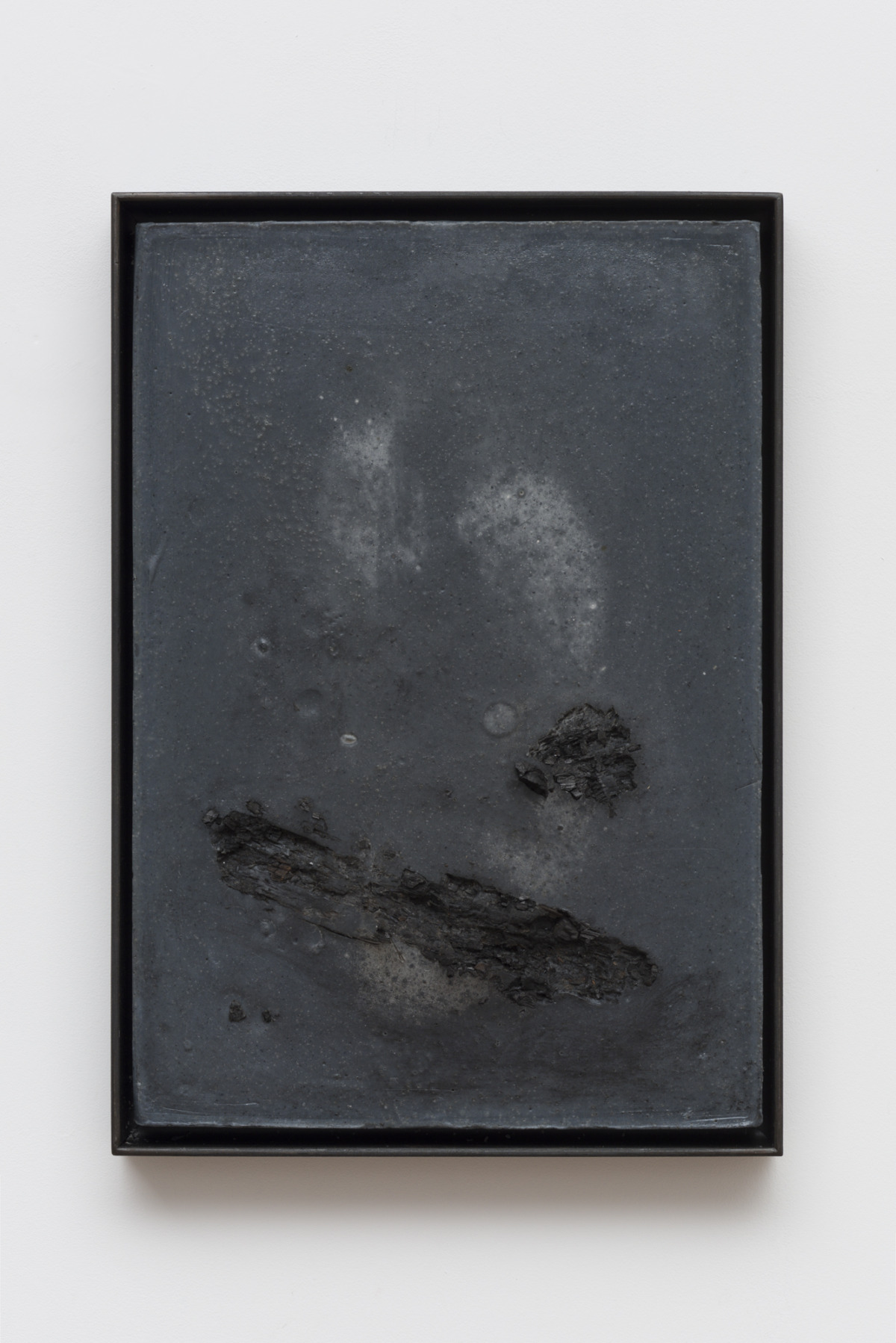
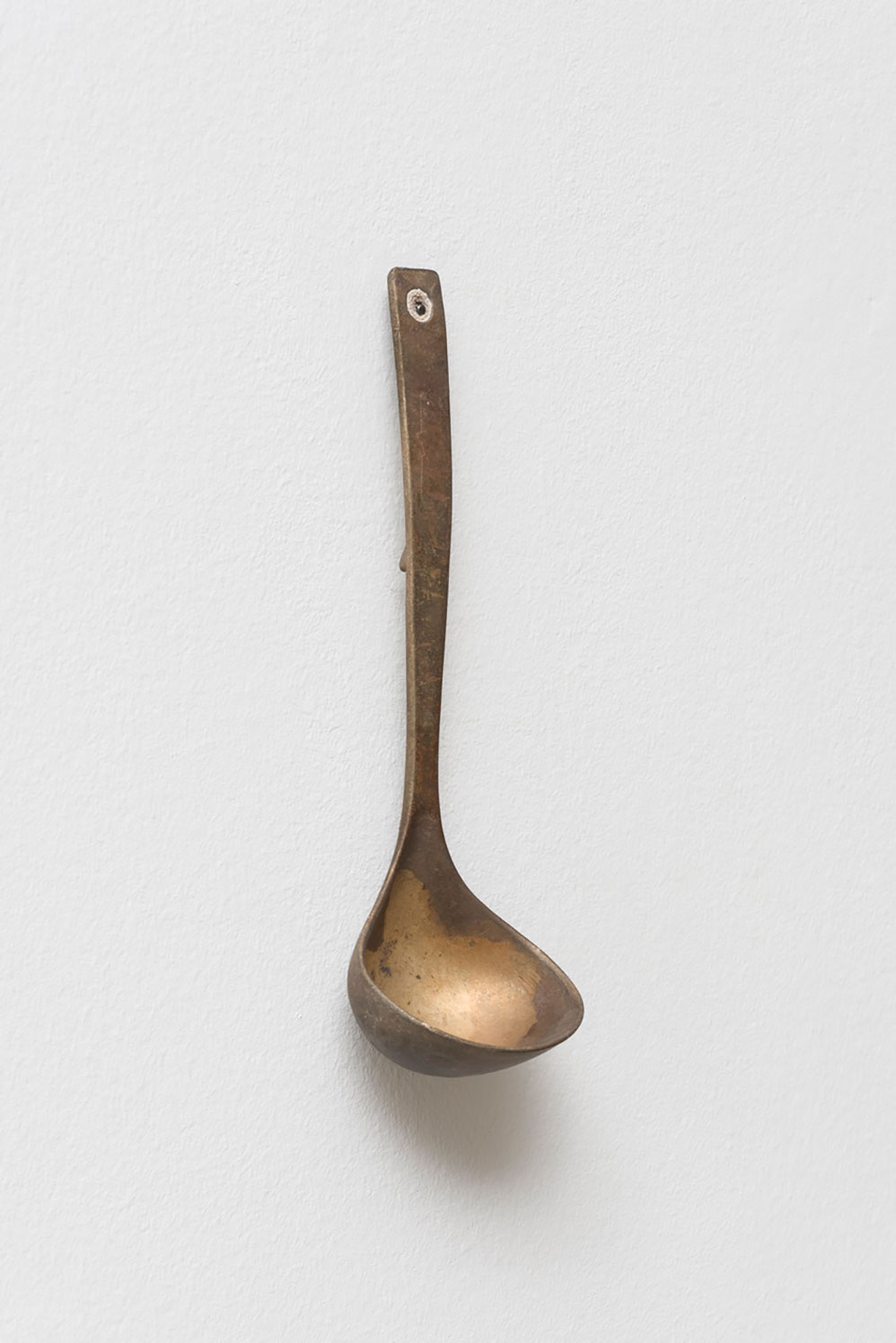
Max Ruf
By adopting the trope of the journeying plein-air artist, Ruf articulates movements and displacement through different natural environments to merge the pressures of a site with the material plasticity of paint. In this way, his gestural approach to the canvas resonates with his movement’s correspondence with the landscape.
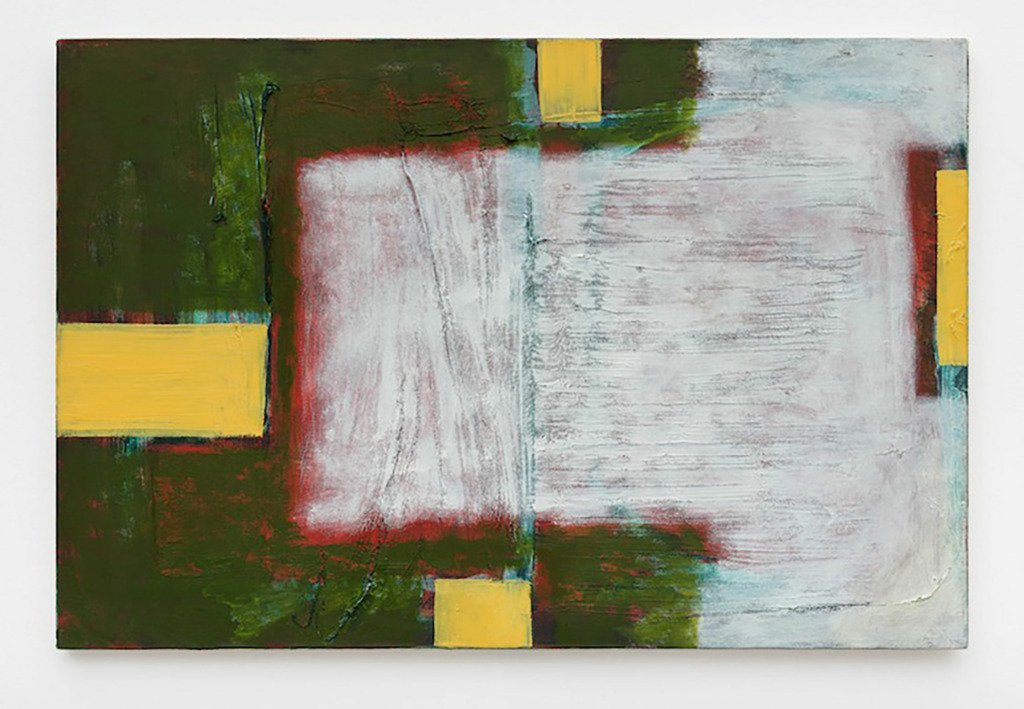
Oliver Osborne
This artist’s work combines elements of abstraction, figuration, and appropriation. Silkscreens of appropriated cartoons, large multi-paneled monochrome canvases, embroidery, and precisely executed, photorealistic paintings are all part of his repertoire. By using this broad visual language, he attempts to push against the traditional separation between abstraction and figuration and understand the potential the act of painting still holds within contemporary art.
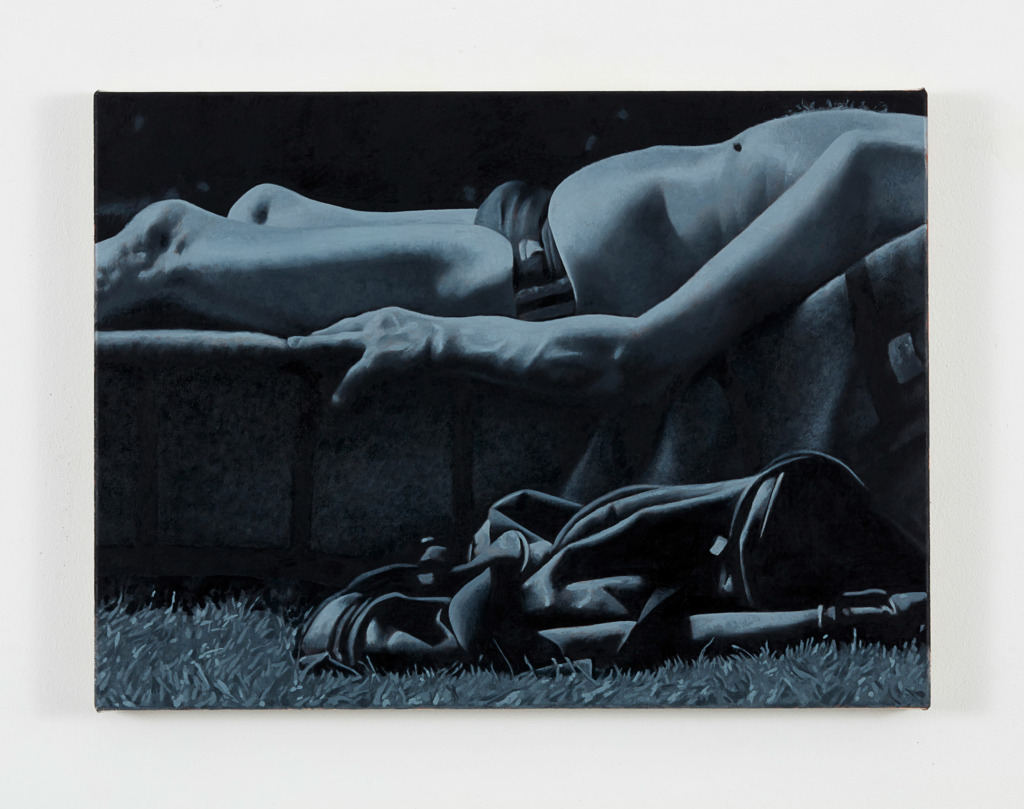
Talisa Lallai
Lallai’s work combines her own photographic and film material with found footage from private slide collections, vintage magazines, and convolutes of commercial photographs. Rather than capturing a reality, it is the subjective perception of a place that is important to her. Lallai’s pictorial language is based on real and imaginary journeys. She mainly focuses on idealizations and stereotypes of the South in general and what ideas and images it evokes in us.
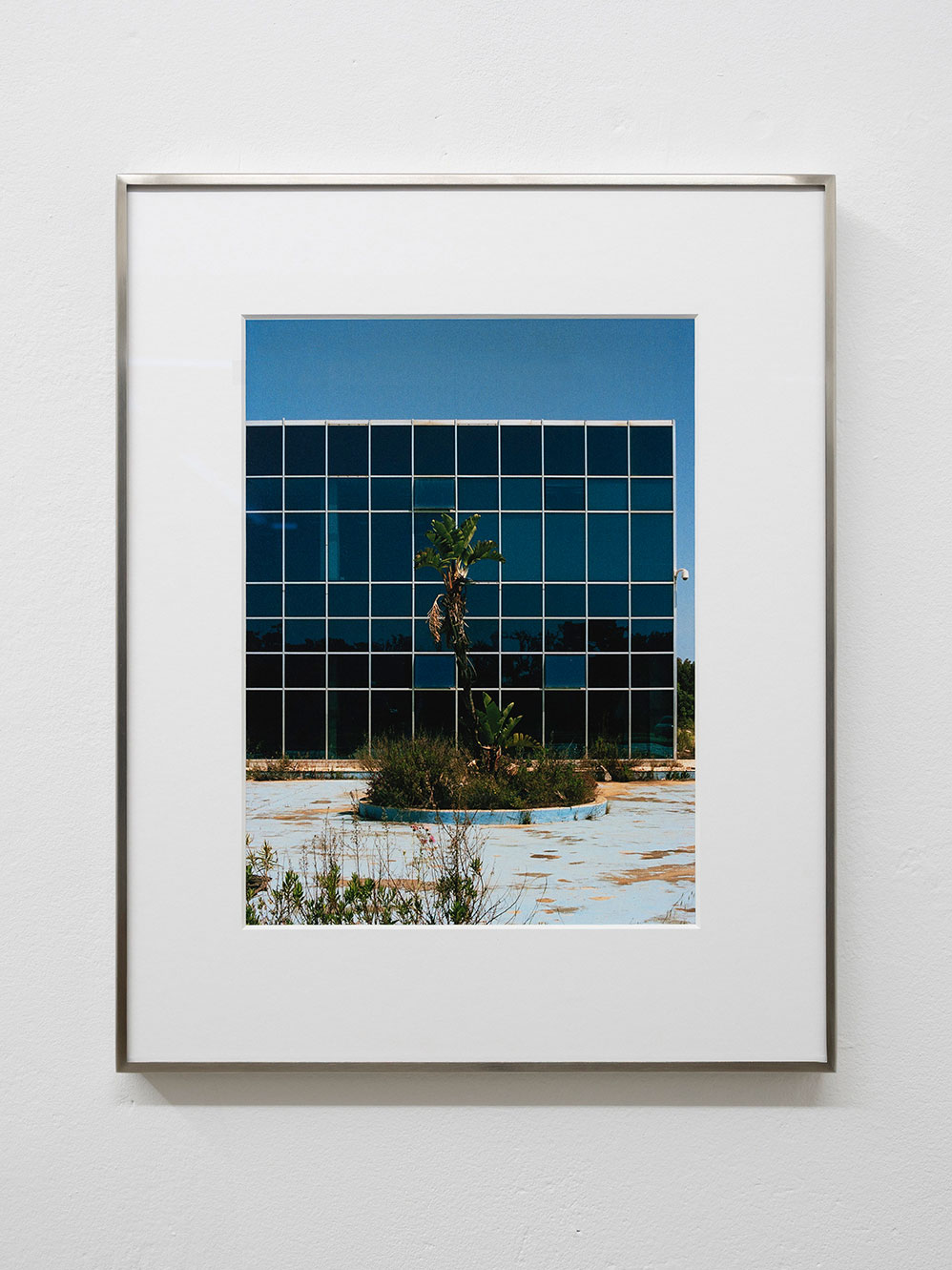
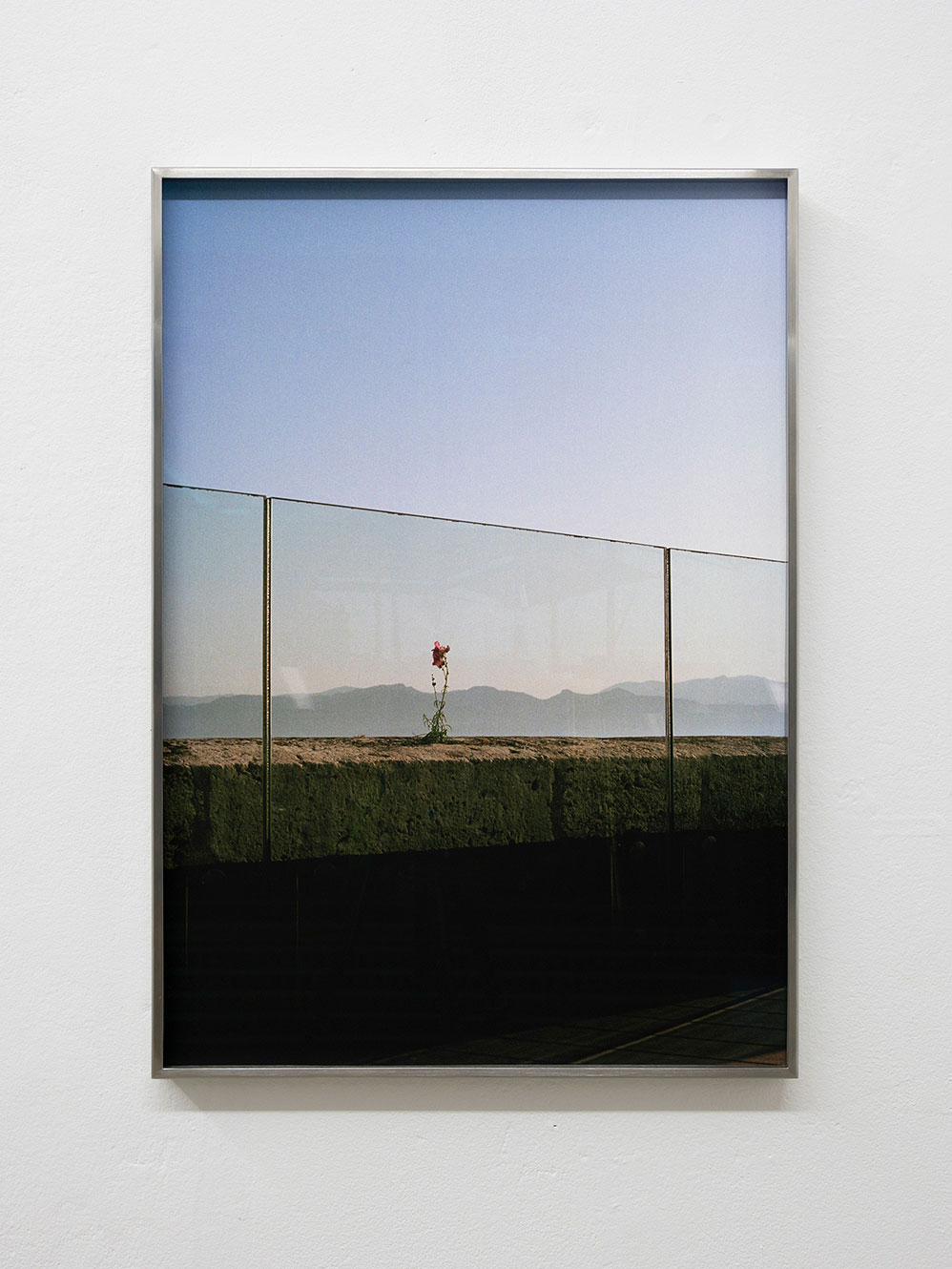
Super Super Markt is a membership community founded by Julius Jacobi and Rory Kirk-Duncan to make art more accessible for new generations. Through exhibitions and events, they are building the future art ecosystem—a community devoted to young art lovers and collectors and a platform to exhibit the best contemporary art.
From the 25th of November to the 22nd of January, Friends of Friends, in collaboration with Super Super Markt, will host the group exhibition ‘Homestory’ in the Friends Space.
Five contemporary artists will be exploring the space from the perspective of a collectors’ home—referencing a domestic subject matter: Plants, windows, interior objects, and food —items from our lives that infiltrate our daily cosmos.
You can visit the exhibition upon request on our Instagram account or by emailing us at [email protected].
Interview: Maria Paris Borda
Images: Courtesy of Super Super Markt
